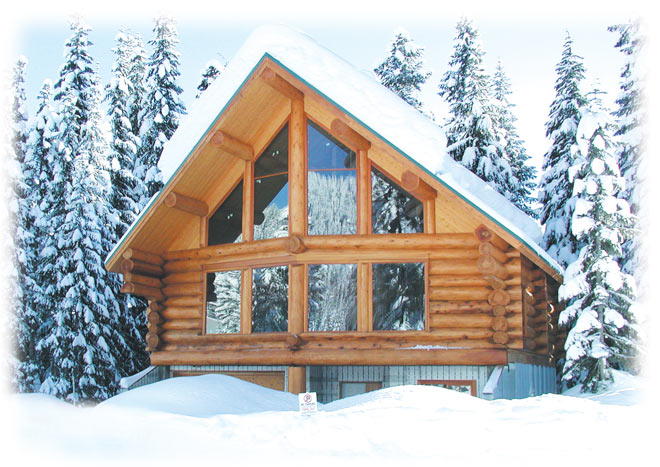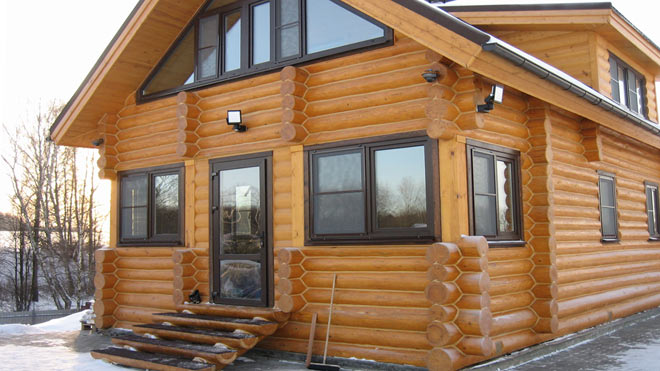It’s getting cold and you still haven’t finished sealing your home. So what can you do? Depending on the stage of construction you are in, you have several options available. The most critical part of the application process that is weather dependent is staining or finishing the exterior. This should always be done keeping the weather in mind.

Temperature and humidity go a long way in determining how well a product will perform and can also determine the success or failure of the product. Air temperature and substrate temperature are not always the same.
For example, a log wall that is exposed to constant shade will normally have a lower surface temperature than the air around it. Even though the air has warmed up considerably, there may still be ice or moisture on the log surface that will interfere with the finish.
If the wall feels warm to your touch, it’s probably OK to apply your finish as long as there is sufficient time for the product to dry before the temperature drops below freezing. Allow four to six hours of drying time before the finish is exposed to freezing temperatures.

Products that are “freeze/thaw” stable are formulated to resist damage during freezing temperatures, but it doesn’t mean they can be applied in freezing weather. It also doesn’t mean they can be constantly exposed to temperatures below freezing.
In most circumstances, it is always better to stain prior to applying chinking. It is very difficult to apply a finish without staining existing chinking or sealant. So, if you were able to apply your finish in good weather conditions you can apply the chinking or other sealant in colder weather.
If the home is located in a very cold climate, it may be necessary to “tent” the home and use space heaters to warm up the area prior to the application of the chinking. This serves more than one purpose. First of all, it helps to warm up the surface and drive off excessive moisture from the substrate. Second, it is much more difficult to work in sub-freezing conditions and may make the results less than satisfactory
Care should be exercised anytime you are using space heaters in confined area as they consume life-supporting oxygen in order to achieve combustion. They also emit deadly fumes that can cause serious injury or death.
If you tent the home for work, always allow for fresh air to enter the area in more than one place and break the work up into small time periods so you can leave the tented area for a while.
Perma-Chink and Energy Seal are both freeze/thaw stable, but as the temperature drops the viscosity of the product goes up. Consequently it gets more difficult to apply them as it gets colder. To make the product trowel easier, put a few drops of liquid dishwashing detergent in your spray bottle before you start.
As in any temperature, do not apply the chinking compound over dirt, grease, or wood that has water or ice on the surface since this will impede adhesion and lead to early failures. If possible, store the product in a heated area prior to application and only bring out pails that will be immediately used.
Also remember when you apply chinking, water is involved in both the tooling process and clean up, which makes it feel even colder. So, plan extra time for the project and allow time for warm up to make your job easier.
It is possible to work under less than ideal weather conditions if the will exists and the weather is not totally intolerable. Remember, if you use common sense and follow the directions, you’ll never go wrong.
Click here to see what products are freeze/thaw stable.
